GOAL
The main goal of the Environment and Pollution Studies Laboratory (EPSL) is to study pollution in the Philippines and its neighboring nations in general. Specifically, EPSL aims to study air, water and soil pollution. The EPSL surveys various aspects of pollution (e.g. sources, content, impacts). The laboratory therefore involves assessment of different sites all over the country. In addition, the EPSL stands by the views of One Health and identifies the inter-connectivity of humans, animals, and the environment.
Research Interest
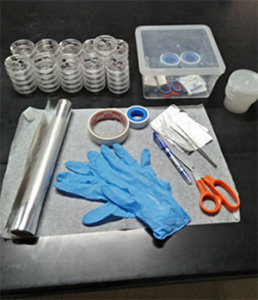
Air, Water and Soil contaminants and transport
Description
Environmental Pollution Studies is concerned about determining the level and extent of contamination in air, water and soil. It also aims to determine and describe how the contamination is transported from different spheres of the Earth.
Current Project
TRACe Fish: Trace oRganics and metAls in Commodity Fish: Method optimization, extent of contamination and health risk due to fish intake (2017)
Previous project
Manila Aerosol Characterization Experiment 2015; Polycylic Aromatic Hydrocarbons (PAHs) in size-segregated atmospheric particulate matter from a traffic site in Quezon City, Philippines (2015)
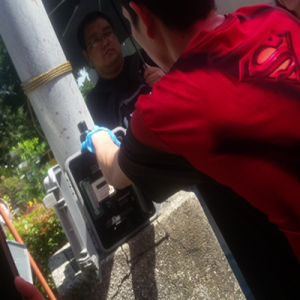
Air and Water Quality Management
Description
Having issues in the Philippines regarding air and water quality, EPSL aims to develop and recommend policies that will help to improve the air and water quality for sustainable future. It also wants to train concerned personnel from both private and government sectors to have better environmental management.
Current Project
Prevented emissions of carbon dioxide, nitrous oxide and particulate mattrer due to fleet shifting from conventional to electric tricycle (2017); Technical assistance to the air quality monitoring system of Rotary Club of Makati (2016)
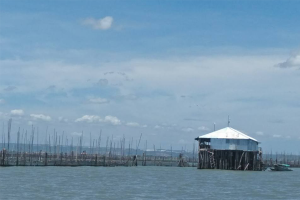
Aquatic ecosystems rehabilitation
Description
EPSL is also interested to restore ecological integrity of various aquatic ecosystems of contaminated and degraded habitats for the benefit of the environment and the people.
Current Project
Synergistic Capacity Advancement for the Management of Laguna Lake: SCALE (2017)
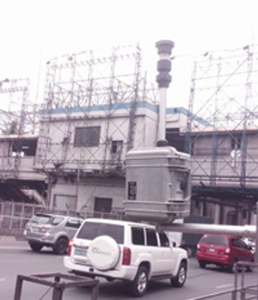
Clean Air for megacities and smaller cities
Description
With the rapid growth of vehicles in the urban areas, traffic-generated emissions have been a significant contributor to urban air pollution. EPSL, in collaboration with UNU and GIST joint programme, studies local emissions and their health impacts in Philippine cities such as Metro Manila and Baguio City. This venture aims to provide scientific knowledge and better understanding of the relationship between roadway emissions and the hazard of human exposure to air pollutants.
Previous Project
LEAP PH Megacities: Local Emissions, Air Pollution and Public Health studies in Philippine megacities
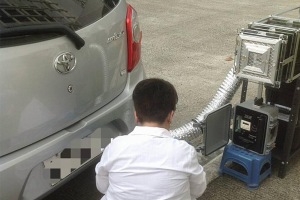
Emissions Inventory
Description
Emissions from vehicles, cookstoves, and biomass burning are some of the sources of air pollution in urban areas. EPSL is dedicated in conducting researches to broaden and deepen the knowledge on the impacts of these emissions to the state of the quality of air.
Current Project
Concentration ratios and molecular markers of PAHs in three Metro Manila ambient sites and from a selected emission source (2017)
Previous Project
Emission factors from motor vehicle pollution sources using a wind tunnel set-up (2014-2015); Determination of Particulate and Elemental emission factors from Selected Area and Point Sources in Metro Manila (2014)

Environmental toxicology
Description
EPSL also aims to describe and address adverse ecological health risks due to hazardous contaminants present in air. Future direction may include expansion into the field of air and soil contaminants.
Previous Project
Polycylic Aromatic Hydrocarbons (PAHs) in size-segregated atmospheric particulate matter from a traffic site in Quezon City, Philippines (2015)
OTHER RESEARCH INTERESTS

Sustainable Transport
Description: With issues such as climate change and rapid population growth, the shift to a more sustainable means of transport is needed now more than ever. EPSL is involved in projects which help provide baseline for the implementation of more eco-friendly transportation.
Current Project: Prevented emissions of carbon dioxide, nitrous oxide and particulate matter due to fleet shifting from conventional to electric tricycle (2017)
Previous project: Emission factors from motor vehicle pollution sources using a wind tunnel set-up (2014-2015)
Green Chemistry
Description: EPSL is also dedicated to producing the least possible amount of hazardous chemical waste in all its projects and analytical services. By developing strategies to minimize waste, EPSL aims to be the standard in for sustainable research practices.
Climate Change and co-benefits
Description: EPSL aims to study climate change and mitigate the impact of climate change in the Philippines and other neighbouring nations. It also wants to study and develop various climate change co-benefits for impact mitigation such as technological innovation, energy-supply security, etc.
Current Project: Understanding the Impacts of Climate Change and Towards Adaptation in the Philippines (2017-2022), Year 1: Assessing the integrity of megacities environment: air and water quality
Cook stoves and indoor air pollution
Description: Indoor air pollution from solid fuels is one of the top 10 causes of disease both globally and in Southeast Asia. EPSL aims to address the gap in the management of air quality by testing local cook stoves fuels generating local emission factors that can be used for better assessment of local emissions and for public health protection.
Previous Study: Particulate Emission Factor of Key Area Pollution Sources derived from Wind Tunnel Experiments (2014)
Non-ISI Publications
Mylene G. Cayetano, Colleen Marciel Rosales and Rheo B. Lamorena-Lim. (2015) Determination of particulate and elemental emission factors from selected area and point sources in Metro Manila, UNU-GIST Publication.
Tong Zhu, Mylene G. Cayetano, Changhong Chen, Sarath Guttikunda, Min Hu, Young J. Kim, Yataka Kondo, Peter K.K. Louie, Luisa Molina, Yu Morino, Nguyen Thi Kim Oanh, Eduardo P. Olaguer, Didin Agustian Permadi, Prapat Pongkiatkul, Abdus Salam, Min Shao, Xuesong Sun,Shinji Wakamatsu, Hongli Wang and Peyman Zawar-Reza. (2012). WMO/IGAC Impacts of Megacities on Air Pollution and Climate. Chapter 3 – Asia. p. 59~140
ISI Publications
Hagad, H.R. and Cayetano, M.G.(2018). PM10 and surface dust source characterization in Baguio City Central Business District (CBD), Philippines.Environmental Geochemistry and Health.doi:https://doi.org/10.1007/s10653-018-0208-7
Borlaza, L.J.S., Cosep, E.M.R., Kim, S., Lee, K., Joo, H., Park, M., Bate, D., Cayetano, M.G., Park, K.(2018), Oxidative potential of fine ambient particles in various environments, Environmental Pollution, doi: https://doi.org/10.1016/j.envpol.2018.09.074.
Jolejole, M. E., Kim, J.B., Jeon, D.J., Cayetano, M., Kim, J. H. (2018). Scenario study of the effect of different land use to a sub-basin in Yeongsan River basin using SWAT model. Desalination and Water treatment. 120. 198-204. 10.5004/dwt.2018.22884.
Kecorius, S., Tamayo, E.G., Galvez, M. C., Madueño, L., Betito, G., Cayetano, M., Vallar, E., Wiedensohler, A. (2018). Activity Pattern of School/University Tenants and their Family Members in Metro Manila – Philippines. Aerosol and Air Quality Research. 18. 2412-2419. 10.4209/aaqr.2018.02.0069.
Gibe, H. P. and Cayetano, M. G.: Spatial estimation of air PM2.5 emissions using activity data, local emission factors and land cover derived from satellite imagery, Atmos. Meas. Tech. Discuss., doi:10.5194/amt-2017-14, in review, 2017.
Everlyn Gayle T. Tamayo, Mylene G. Cayetano, Charita S. Kwan, Konrad Müller, Development of an analytical method for the solvent extraction of Polycyclic Aromatic Hydrocarbons (PAHs) in air particulate matter, Journal of Environmental Science and Management (Submitted as of 31 August, 2016)
Jinsang Jung, KwangYul Lee, Mylene G. Cayetano, Tsatsral Batmunkh, and Young J. Kim (2015). Optical and hygroscopic properties of long-range transported haze plumes observed at Deokjeok Island off the west coast of the Korean Peninsula under the Asian continental outflows. Journal of Geophysical Research-Atmospheres. 120, 8861-8877
ABSTRACT:
An intensive field campaign was conducted on Deokjeok Island off the west coast of the Korean Peninsula during spring 2009 to characterize the optical and hygroscopic properties of Asian continental outflows. A slightly high wavelength dependence of light absorption coefficient, α of 1.6 ± 0.05 (average ± 1· standard deviation), and a low humidity-dependent light scattering enhancement factor at 80% relative humidity, f(80%) (2.0 ± 0.2), were obtained when air masses originated from the northern part of China (N China), compared to those obtained when air masses originated from the eastern part of China (E China) (α = 1.4 ± 0.1; f(80%) = 2.4 ± 0.2). The relatively high α and low f(80%) during the N China compared to those during the E China were consistent with a relatively high mass ratio of organic aerosol to sum of SO42−, NO3−, and NH4+ during the N China (1.01 ± 0.17) compared to the E China episode (0.25 ± 0.13). This result indicates the importance of organic aerosol on aerosol optical and hygroscopic properties of haze plumes. Single scattering albedo (SSA) of dry particulate matter with a diameter less than or equal to 2.5 µm (PM2.5) (0.92 ± 0.01) and mass scattering efficiency (MSE) of dry PM2.5 at 550 nm wavelength during the E China episode (3.6 ± 0.3 m2 g−1) were higher than those previously obtained at the air mass source regions in China (SSA = ~0.8; MSE = ~3.0 m2 g−1), implying that optical properties of PM2.5 were significantly altered during long-range atmospheric transport.
Link: http://onlinelibrary.wiley.com/doi/10.1002/2015JD023154/abstract
Edgar Vallar, Maria Cecilia Galvez, Red Castilla, Mylene Cayetano, James Simpas, Melliza Cruz, Rheo Lamorena-Lim, Len Herald Lim, Preciosa Corazon Pabroa, Ronald Macatangay, Gerry Bagtasa, Teresita Peralta, Jean Rosete, and Vernon Morris. (2015) Analysis of tropospheric and columnar Ozone measurements in Manila, Philippines. ACRS Publication
ABSTRACT:
Ozone is a gas that can be found in the stratosphere and the troposphere. Stratospheric ozone, formed when sunlight breaks down oxygen molecules, plays a beneficial role because it absorbs most of the harmful UV rays of the Sun. Tropospheric or ground-level ozone is produced from photochemical reactions involving man-made emissions from industry and automobiles. This ozone is harmful to man because it leads to respiration problems aside from damaging plants. In addition, ozone is also a greenhouse gas. This work investigated the diurnal variation of both tropospheric ozone and columnar ozone from May 25 – 31, 2015 in De La Salle University (DLSU), Manila, Philippines. In particular, this paper presents data collected as part of the Metro Manila Aerosol Characterization Experiment (MACE) 2015, an intensive aerosol characterization campaign conducted by the RESearchers for Clean Air (RESCueAIR), the Leibniz Institute for Tropospheric Research (TROPOS) from Leipzig, Germany, the Korea Research Institute of Standards and Science (KRISS), and Partnership for Clean Air (PCA). Columnar ozone was studied using a tripod-mounted MICROTOPS II ozonemeter and a comparison of these values with ozone readings from the Ozone Monitoring Instrument (OMI) is presented in this paper. Tropospheric ozone was measured 24 hours each day using a Differential Optical Absorption Spectrometer (DOAS) and a Thermo Environmental Instruments Model 49C ozone analyzer. The DOAS is part of the Air Quality Monitoring Station (AQMS) under a collaboration between the Environment Management Bureau (EMB) and DLSU while the 49C analyzer is a collaborative measurement between DLSU and the NOAA Center for Atmospheric Sciences. The DOAS instrument is located beside Taft Avenue. The 49C analyzer is housed on the rooftop of the Henry Sy Sr. Hall (HSSH) of DLSU which is about 90 meters above street level. Ozone measurements from these two instruments are also compared in this paper.
Mylene G. Cayetano, Philip K. Hopke, Kwon H. Lee, Jinsang Jung, Tsatsral Batmunkh, Kwangyul Lee, and Young J. Kim. Investigations of transported and local emissions on particle compositions in Korea. Aerosol and Air Quality Research, (accepted as of July 2013)
ABSTRACT:
Aerosol and Air Quality Research, 14: 793–805, 2014
Copyright ©Taiwan Association for Aerosol Research
ISSN:1680-8584 print/2071-1409online
doi:10.4209/aaqr.2012.08.0218
Investigations of the Particle Compositions of Transported and Local Emissions in Korea
Mylene G. Cayetano1¥, Philip K. Hopke2, Kwon H. Lee3, Jinsang Jung1§, Tsatsral Batmunkh1, Kwangyul Lee1, Young J. Kim1*
1 School of Environmental Science and Engineering, Gwangju Institute of Science and Technology, 500712, Gwangju, Korea
2 Center for Air Resources Engineering and Science Clarkson University, P.O. Box 5708 Potsdam, NY 13699-5708, USA
3 Department of Satellite Geoinformatics Engineering, Kyungil University, Buhori 33, Hayangeub, Gyungsan, Korea
ABSTRACT
The synoptic meteorological patterns, aerosol optical thickness (AOT) and changes in the chemical composition of aerosol particles are indicators that allow the study of the effects of emissions on air quality. These approaches have been applied to two sets of intensive campaign measurement data in Gwangju, Korea, allowing the identification of long-range transported (LRT) and local emission impacts in spring of 2008 and 2010. Prefrontal air masses originating from polluted regions of the Asian continent influenced the particulate properties on March 12, 13, 27, April 12–13, and May 7, 2008, resulting in SO4–2 concentrations of 44.1 µg/m3, 44.6 µg/m3, 26.4 µg/m3, 21.9 µg/m3 and 26.4 µg/m3, respectively, compared to a local baseline concentration of 8.5 µg/m3. Air masses affected by mixed burning (LRT-MB) arrived in Gwangju between April 23 to 27, 2008 and influenced the particulate organic carbon (OC) concentrations by as much as 20.0 µgC/m3. Pollution events in 2010 have been classified into three classes: sulfate-nitrate (S-N) dominant, chloride-enriched (Cl–) and mixed burning influenced (Local MB) emissions. From the diurnal patterns of SO4–2 and NO3–, their concentrations were found to be lowest at midday and highest in the evening, with their chemical transformation reactions consistent with known processes that lead to the formation of NH4NO3. Cl-enriched emissions not related to sea salt and biomass burning emissions were observed on various occasions; a strong correlation (adjusted R2 = 0.96) between excess NH4+ and Cl– exists for the pooled cases. The data suggested contributions from local municipal solid waste combustion and biomass burning. Overall analysis of ionic balance suggests that the LRT particles may provide an excess SO4–2. The neutralizing capacity of NH3 for local emissions was demonstrated from the detection of sufficient amount of NH4+ that has been reacted with Cl–.
Keywords: PM2.5; Atmospheric aerosols; Air pollution; Emission characterization; Municipal solid waste burning; Biomass
burning; Urban air quality; Secondary aerosol
Mylene G. Cayetano, Young J. Kim, Jin Sang Jung, Tsatsral Batmunkh, Kwang Yul Lee, Sung Yong Kim, Kwan Chul Kim, Dong Gyu Kim, Suk Jo Lee, Jeong Soo Kim and Lim Seok Chang. 2011. Observed chemical characteristics of long range transported particles at a marine background site in Korea. J. Air & Waste Manage. Assoc. 61:1–12 DOI: 10.1080/10473289.2011.604001T
ABSTRACT:
Deokjeok Island is located off the west coast of the Korean Peninsula and is a suitable place to monitor the long-range transport of air pollutants from the Asian continent. In addition to pollutants, Asian dust particles are also transported to the island during long-range transport events. Episodic transport of dust and secondary particles was observed during intensive measurements in the spring (March 31-April 11) and fall (October 13-26) of 2009. In this study, the chemical characteristics of long-range-transported particles were investigated based on highly time-resolved ionic measurements with a particle-into-liquid system coupled with an online ion chromatograph (PILS-IC) that simultaneously measures concentrations of cations (Li+, Na , NH4+, K+, Ca2+, Mg2+) and anions (F-, C1-, NO3-, SO42-). The aerosol optical thickness (AOT) distribution retrieved by the modified Bremen Aerosol Retrieval (M-BAER) algorithm from moderate resolution imaging spectroradiometer (MODIS) satellite data confirmed the presence of a thick aerosol plume coming from the Asian continent towards the Korean peninsula. Seven distinctive events involving the long-range transport (LRT) of aerosols were identified and studied, the chemical components of which were strongly related to sector sources. Enrichment of acidic secondary aerosols on mineral dust particles, and even of sea-salt components, during transport was observed in this study. Backward trajectory, chemical analyses, and satellite aerosol retrievals identified two distinct events: a distinctively high [Ca2++Mg2]/[Na+] ratio (>2.0), which was indicative of a preprocessed mineral dust transport event, and a low [Ca2++Mg2+]/[Na+] ratio (<2.0), which was indicative of severe aging of sea-salt components on the processed dust particles. Particulate C1- was depleted by up to 85% in spring and 50% in the fall. A consistent fraction of carbonate replacement (FCR) averaged 0.53 in spring and 0.55 in the fall. Supporting evidences of C1- enrichment on the marine boundary layer prior to a dust front were also found. Supplemental materials are available for this article. Go to the publisher’s online edition of the Journal of the Air & Waste Management Association for sector and air mass classifications of clean and LRT cases.
Link: https://www.ncbi.nlm.nih.gov/pubmed/22168103
Batmunkh, Y.J.Kim, K.Y.Lee, Cayetano M. G., J.S.Jung, S.Y. Kim, D.G.Kim, K.C.Kim, S.J. Lee, J.S. Kim, L.S. Chang, and J.Y. An. 2011. Time-resolved measurements of PM2.5carbonaceous aerosols at Gosan, Korea. J. Air & Waste Manage. Assoc. 61:1–10. DOI: 10.1080/10473289.2011.609761
ABSTRACT:
In order to better understand the characteristics of atmospheric carbonaceous aerosol at a background site in Northeast Asia, semicontinuous organic carbon (OC) and elemental carbon (EC), and time-resolved water-soluble organic carbon (WSOC) were measured by a Sunset OC/ EC and a PILS-TOC (particle-into-liquid sampler coupled with an online total organic carbon) analyzer, respectively, at the Gosan supersite on Jeju Island, Korea, in the summer (May 28-June 17) and fall (August 24-September 30) of 2009. Hourly average OC concentration varied in the range of approximately 0.87-28.38 microgC m-3, with a mean of 4.07+/- 2.60 microgC m-3, while the hourly average EC concentration ranged approximately from 0.04 to 8.19 .microgC m-3, with a mean of 1.35 +/- 0.71 microgC m-3, from May 28 to June 17, 2009. During the fall season, OC varied in the approximate range 0.9-9.6 microgC m-3, with a mean of 2.30 +/-0.80 microgC m-3, whereas EC ranged approximately from 0.01 to 5.40 microgC m-3, with a mean of 0.66 +/- 0.38 microgC m-3. Average contributions of EC to TC and WSOC to OC were 26.0% +/- 9.7% and 20.6% +/-7.4%, and 37.6% +/- 23.5% and 57.2% +/- 22.2% during summer and fall seasons, respectively. As expected, clear diurnal variation of WSOC/OC was found in summer, varying from 0.22 during the nighttime up to 0.72 during the daytime, mainly due to the photo-oxidation process. In order to investigate the effect of air mass pathway on the characteristics of carbonaceous aerosol, 5-day back-trajectory analysis was conducted using the HYSPLIT model. The air mass pathways were classified into four types: Continental (CC), Marine (M), East Sea (ES) and Korean Peninsula (KP). The highest OC/EC ratio of 3.63 was observed when air mass originated from the Continental area (CC). The lowest OC/EC ratio of 0.79 was measured when air mass originated from the Marine area (M). A high OC concentration was occasionally observed at Gosan due to local biomass burning activities. The contribution of secondary OC to total OC varied approximately between 8.4% and 32.2% and depended on air mass type.
Link: https://www.ncbi.nlm.nih.gov/pubmed/22168101
Santiago, E. C., and Cayetano M. G., 2010. Organochlorine Pesticides in Ambient Air in Selected Urban and Rural Residential Areas in the Philippines Derived from Passive Samplers with Polyurethane Disks, Bulletin of Environmental Contamination and Toxicology, 1-6.
ABSTRACT:
The passive sampler with PUF disk was applied to investigate the types and concentrations of organochlorine pesticides (OCPs) in ambient air in three urban and rural residential areas simultaneously at different weather conditions in the Philippines. The concentrations of OCPs derived from the passive samplers indicated clear distinctions in the predominance of certain types and amounts of OCPs in air at different sampling sites and periods of sampling. Chlordanes were detected in concentrations ranging from 218 to 2,324 pg/m3 in the urban residential sites in all the sampling periods, indicating the possible use of these pesticides as termiticides in houses. Endosulfans were detected in two rural sites at 491 pg/m3 and 904 pg/m3 during one sampling period; indicating the possible use of the pesticide in the farm areas at that period.
Link: https://link.springer.com/article/10.1007/s00128-010-0160-4
Jung, J., Y. J. Kim, K. Y. Lee, Cayetano M. G., T. Batmunkh, J. H. Koo, and J. Kim.. Spectral optical properties of long-range transport Asian dust and pollution aerosols over Northeast Asia in 2007. Atmos. Chem. Phys. Discuss., 10(2), 2397-2444.
ABSTRACT:
As a part of the IGAC (International Global Atmospheric Chemistry) Mega-cities program, aerosol physical and optical properties were continuously measured from March 2007 to March 2008 at an urban site (37.57° N, 126.94° E) in Seoul, Korea. Spectral optical properties of long-range transported Asian dust and pollution aerosols have been investigated based on the year long measurement data. Optically measured black carbon/thermally measured elemental carbon (BC/EC) ratio showed clear monthly variation with high values in summer and low values in winter mainly due to the enhancement of light attenuation by the internal mixing of EC. Novel approach has been suggested to retrieve the spectral light absorption coefficient (babs) from Aethalometer raw data by using BC/EC ratio. Mass absorption efficiency, σabs (=babs/EC) at 550 nm was determined to be 9.0±1.3, 8.9±1.5, 9.5±2.0, and 10.3±1.7 m2 g−1 in spring, summer, fall, and winter, respectively with an annual mean of 9.4±1.8 m2 g−1. Threshold values to classify severe haze events were suggested in this study. Increasing trend of aerosol single scattering albedo (SSA) with wavelength was observed during Asian dust events while little spectral dependence of SSA was observed during long-range transport pollution (LTP) events. Satellite aerosol optical thickness (AOT) and Hysplit air mass backward trajectory analyses as well as chemical analysis were performed to characterize the dependence of spectral optical properties on aerosol type. Results from this study can provide useful information for studies on regional air quality and aerosol’s effects on climate change.
Link: http://www.atmos-chem-phys.net/10/5391/2010/
Santiago, E. C., and Cayetano M. G. 2007. Polycyclic aromatic hydrocarbons in ambient air in the Philippines derived from passive sampler with polyurethane foam disk. Atmospheric Environment, 41(19), 4138-4147.
ABSTRACT:
Passive samplers with polyurethane disks (PUF) were applied in the determination of the concentration of polycyclic aromatic hydrocarbons (PAHs) in ambient air in six residential areas in the Philippines during four simultaneous sampling periods. The uptake profiles of PAHs were determined at one site during one sampling period. Most of the PAHs that were detected in air at concentrations that were significantly higher than their analytical detection limits exhibited a linear uptake trend on the PUF disk. The linear uptake profiles of some high molecular weight (HMW) PAHs were not established and this is attributed to the low concentration of the compounds in air in the gaseous phase. The retention concentrations of phenanthrene-d-10 were determined after depuration in four sampling sites during two sampling periods. The sampling rate for phenanthrene-d-10 was calculated at the linear phase of the uptake using the kA derived from depuration experiments and the relationship of kA and sampling rate which was established in a previous passive sampling study. The average sampling rate obtained for phenanthrene d-10 (2.94±0.69 m3 d−1) was applied for derivation of the concentrations of the PAHs in the field samples.
The passive sampler with PUF disk and short integration time of 42–56 days is applicable for the derivation of the concentrations of PAHs in ambient air in the Philippines. The concentrations of the organic pollutants derived from the passive sampler showed variability for the six residential areas; reflecting the influence of possible sources of emission of the pollutants at the sites at the different sampling periods. The weather conditions, including the occurrence of a tropical cyclone, increased rainfall and high-relative humidity during the rainy season, had an influence on the concentrations of PAHs derived by the passive sampler.
LINK: http://www.sciencedirect.com/science/article/pii/S1352231007000751
MS STUDENTS GRADUATED
Everlyn T. Tamayo
THESIS: Development of an analytical method for the solvent extraction of Polycyclic Aromatic Hydrocarbons (PAHs) in air particulate matter, Journal of Environmental Science and Management (Submitted as of 31 August, 2016)
Hilda R. Hagad
THESIS: Source Identification and Elemental Quantification of Airborne Particulate Matter (APM) in Central Business District ,Baguio City Philippines
Hezron P. Gibe
THESIS: Estimated emissions of air PM2.5 derived from satellite imagery, local emission factors, and activity data validated in situ using source apportionment by positive matrix factorization (PMF) in Cabanatuan City, Nueva Ecija
Mark Edward A. Jolejole
THESIS: Response to Benthic Macroinvertebrate Communities in Streams of Cabuyao, Laguna to Surrounding Industrial Land Use
Munir J. Baldomero
THESIS: Boundary Layer Climatology in Quezon City Using Different Instruments
Kenny Vienne S. Mandingz
THESIS: “Effects of the Manila Bay Breeze Circulation on the Particulate Matter Concentration of Metro Manila
Begie C. Perdigones
THESIS: Analysis and Prediction of Particulate Matter Concentrations in Metro Manila Using Feed-forward Back-propagation Artificial Neural Network
Henrison C. Sanchez
THESIS: Characterizing the Urban Heat Island phenomenon in Cabanatuan City using Weather Research and Forecasting (WRF) Model
MS CANDIDATES
- Patricia Erika P. Lim
- Hezron P. Gibe
- Richard B. Casiguran
- Genievie Dayaon
- Jonah John G. San Pedro
- Irjay P. Rolloda
- Paul Ezekiel M. Losaria
- Joanna Mae D. Norcio
- Daniel Cristobal C. Lor
- Sheryllyn M. Linda
